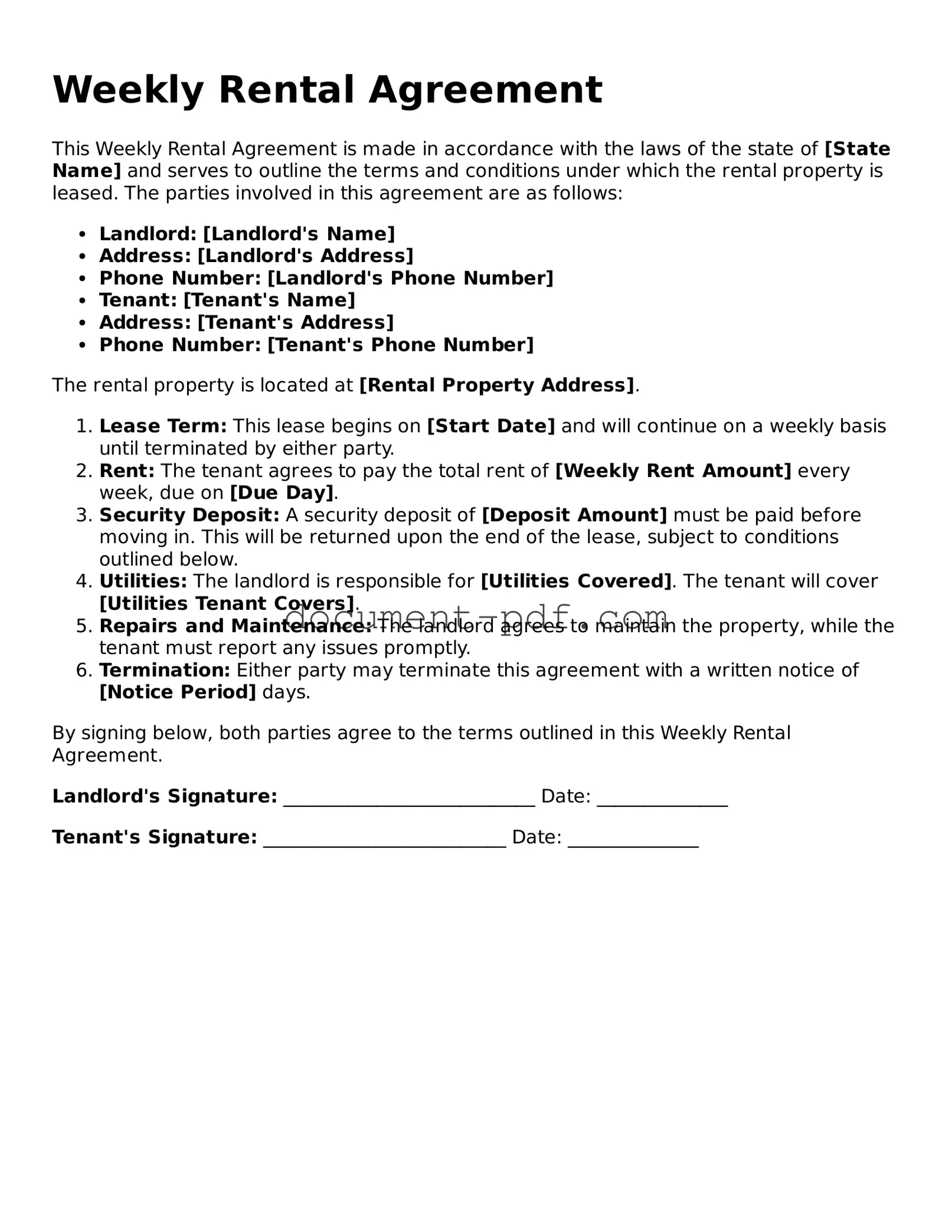The Weekly Rental Agreement is similar to a Lease Agreement, which outlines the terms of renting a property for a longer duration, typically six months to a year. Both documents specify the responsibilities of the landlord and tenant, including payment terms, maintenance duties, and rules for property use. While a Lease Agreement is generally more detailed and covers a longer rental period, the Weekly Rental Agreement provides a more flexible option for short-term rentals, making it easier for both parties to adjust terms as needed.
A Lease Agreement serves as an essential tool for defining the terms of the landlord-tenant relationship, ensuring both parties are on the same page regarding responsibilities, rights, and rental specifics. To access a comprehensive template for this crucial document, visit georgiapdf.com/lease-agreement, where you can find the necessary resources to facilitate your rental agreements effectively.
Another document that shares similarities with the Weekly Rental Agreement is the Month-to-Month Rental Agreement. This type of agreement allows tenants to occupy a property on a monthly basis, with the ability to terminate the lease with short notice. Like the Weekly Rental Agreement, it outlines rent payment details, security deposits, and property maintenance responsibilities. The key difference lies in the duration; the Month-to-Month Rental Agreement typically offers more stability than a weekly arrangement, while still allowing for flexibility.
A Vacation Rental Agreement is also comparable to the Weekly Rental Agreement. This document is specifically designed for short-term rentals, often in tourist areas. Both agreements cover rental duration, payment terms, and property rules. However, the Vacation Rental Agreement may include additional clauses related to guest behavior, cleaning fees, and check-in/check-out procedures, tailored to the needs of short-term guests and property owners.
Lastly, a Room Rental Agreement is similar in that it governs the rental of a single room within a larger property. This type of agreement addresses the rights and responsibilities of both the landlord and the tenant, just like the Weekly Rental Agreement. It typically includes details on rent, shared spaces, and house rules. The primary distinction is that a Room Rental Agreement often involves shared living arrangements, whereas the Weekly Rental Agreement can apply to entire units or properties.
